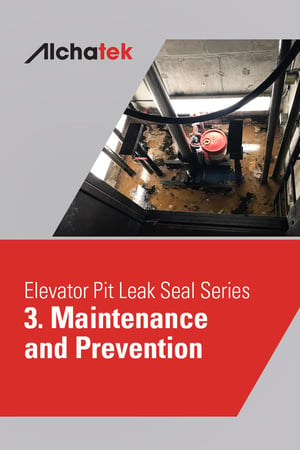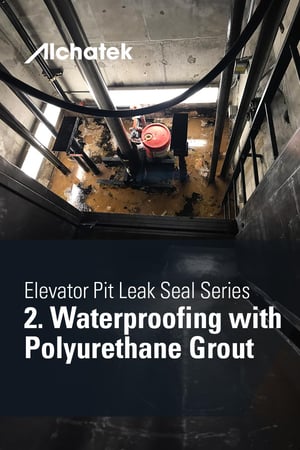
 The preservation of architectural treasures is a paramount concern. These structures not only embody a rich history but also present unique challenges in maintenance and repair. One such challenge is effectively sealing leaks without compromising the building's aesthetic integrity or historical value. This series aims to provide an in-depth understanding of the advanced solutions available for this delicate task.
The preservation of architectural treasures is a paramount concern. These structures not only embody a rich history but also present unique challenges in maintenance and repair. One such challenge is effectively sealing leaks without compromising the building's aesthetic integrity or historical value. This series aims to provide an in-depth understanding of the advanced solutions available for this delicate task.
The Complexity and Importance of Preserving Historical Structures
Historical buildings are inherently different from modern constructions, both in the materials used and the methods of construction. These differences necessitate a specialized approach to repair and maintenance, especially when it comes to waterproofing. Leaks, if left unchecked, can cause significant damage to a building's structure, leading to costly repairs and potential loss of historical value. The preservation of these buildings is not just about maintaining a structure; it's about safeguarding a piece of history.
Why Professional Solutions Trump DIY Methods
While the DIY approach may be suitable for minor repairs in modern homes, historical structures require a more nuanced and skilled approach. The use of inappropriate materials or techniques can lead to further damage or an alteration of the building's historical character. Professional contractors specializing in leak seal projects are equipped with the right tools, materials, and, most importantly, the technical knowledge to ensure repairs are both effective and sympathetic to the building's original design. They understand the balance between modern repair needs and historical preservation, ensuring that any intervention is respectful and appropriate.
An Overview of This Series
In the upcoming posts, the focus will be on materials and methods used for sealing leaks in historical structures.
- Understanding Acrylate Grouts: These posts will explore how acrylate materials are particularly effective for delicate surfaces and in situations where maintaining the appearance of the structure is essential.
- The Role of Polyurethane Grouts: The discussion will center on how polyurethane grouts are used in a limited capacity for more significant leaks and voids.
- Understanding Probe Grouting: A non-intrusive technique suitable for below-grade areas.
- Technical Guidance and Professional Help: The final post will emphasize the importance of professional expertise and introduce Alchatek's technical guidance and contractor referral program.
Each post will provide valuable insights into these materials and methods, helping you understand the best practices for preserving the beauty of your historical property. Stay tuned for an informative journey into the world of professional leak sealing in historic structures.




 As a municipal manager or administrator, you’re well aware of the challenges and solutions related to maintaining the structural integrity of infrastructure like bridge approach slabs. The numerous benefits of polyurethane foam, including its cost-effectiveness, quick application time, and long-term durability, make it a compelling choice for bridge approach slab leveling and stabilization.
As a municipal manager or administrator, you’re well aware of the challenges and solutions related to maintaining the structural integrity of infrastructure like bridge approach slabs. The numerous benefits of polyurethane foam, including its cost-effectiveness, quick application time, and long-term durability, make it a compelling choice for bridge approach slab leveling and stabilization.


 Budget constraints are a perennial concern for infrastructure maintenance operations. Whether it's the upkeep of roads, bridge approach slabs, or other critical components, there is an ever-present need to optimize spending without compromising quality. Administrators and engineers alike are continually searching for cost-effective, long-term solutions that deliver robust performance and minimize future maintenance costs.
Budget constraints are a perennial concern for infrastructure maintenance operations. Whether it's the upkeep of roads, bridge approach slabs, or other critical components, there is an ever-present need to optimize spending without compromising quality. Administrators and engineers alike are continually searching for cost-effective, long-term solutions that deliver robust performance and minimize future maintenance costs.
 One of the most pressing challenges in infrastructure maintenance is managing slab repairs on busy roadways, including bridge approach slabs, streets, and highways. These repairs often lead to unavoidable traffic disruptions, posing operational challenges that can significantly impact the daily commute and local economy. As a result, there's an increasing need for solutions that are not only effective in restoring structural integrity but also quick, thus minimizing the time lanes are closed.
One of the most pressing challenges in infrastructure maintenance is managing slab repairs on busy roadways, including bridge approach slabs, streets, and highways. These repairs often lead to unavoidable traffic disruptions, posing operational challenges that can significantly impact the daily commute and local economy. As a result, there's an increasing need for solutions that are not only effective in restoring structural integrity but also quick, thus minimizing the time lanes are closed.
 Structural integrity often takes center stage when discussing the engineering behind bridges, leaving the bridge approach slabs in the periphery. Yet, the approach slabs bear significant loads, channel them effectively into the bridge structure, and play a crucial role in maintaining the structural integrity of the entire bridge system. When these slabs sink or become uneven, the ripple effect goes beyond vehicle safety, impacting the structural equilibrium of adjoining infrastructure. Thus, maintaining their integrity becomes a multi-faceted endeavor.
Structural integrity often takes center stage when discussing the engineering behind bridges, leaving the bridge approach slabs in the periphery. Yet, the approach slabs bear significant loads, channel them effectively into the bridge structure, and play a crucial role in maintaining the structural integrity of the entire bridge system. When these slabs sink or become uneven, the ripple effect goes beyond vehicle safety, impacting the structural equilibrium of adjoining infrastructure. Thus, maintaining their integrity becomes a multi-faceted endeavor.
 The role of bridge approach slabs in vehicle safety and infrastructure integrity is critical but often underestimated. When these slabs begin to sink, the consequences can be dire, ranging from vehicular damage to potential accidents. Such sinking typically originates from imbalances and instability in the underlying soil. It's not just an issue to be patched; it's about stabilizing the ground itself to ensure long-term durability and safety.
The role of bridge approach slabs in vehicle safety and infrastructure integrity is critical but often underestimated. When these slabs begin to sink, the consequences can be dire, ranging from vehicular damage to potential accidents. Such sinking typically originates from imbalances and instability in the underlying soil. It's not just an issue to be patched; it's about stabilizing the ground itself to ensure long-term durability and safety.
 Addressing the complexities of hydraulic elevator pit repairs requires more than just a superficial understanding of the issue. It necessitates a deep dive into the technical aspects and an experienced hand to guide the process. In this realm, Alchatek emerges as a beacon of expertise and support for property owners and managers.
Addressing the complexities of hydraulic elevator pit repairs requires more than just a superficial understanding of the issue. It necessitates a deep dive into the technical aspects and an experienced hand to guide the process. In this realm, Alchatek emerges as a beacon of expertise and support for property owners and managers.
 Polyurethane grout leak repair projects in elevator pits require specific skills and knowledge. A qualified contractor not only addresses current issues but also helps prevent future problems, ensuring the longevity and safety of your elevator system.
Polyurethane grout leak repair projects in elevator pits require specific skills and knowledge. A qualified contractor not only addresses current issues but also helps prevent future problems, ensuring the longevity and safety of your elevator system.
 Neglecting regular maintenance can lead to several problems, besides corrosion, including water accumulation, which, when mixed with oil from hydraulic elevators, creates an environmental hazard and necessitates costly specialized removal. Regular maintenance not only prevents these issues but also extends the life of the elevator system and ensures compliance with safety regulations. It is also key to early leak detection and timely implementation of polyurethane leak seal projects when necessary.
Neglecting regular maintenance can lead to several problems, besides corrosion, including water accumulation, which, when mixed with oil from hydraulic elevators, creates an environmental hazard and necessitates costly specialized removal. Regular maintenance not only prevents these issues but also extends the life of the elevator system and ensures compliance with safety regulations. It is also key to early leak detection and timely implementation of polyurethane leak seal projects when necessary.
 Following the previous discussion on the risks associated with water leakage in hydraulic elevator pits, this section focuses on an effective solution: polyurethane grout. Polyurethane grout is a highly efficient material used in construction for sealing and waterproofing. Its unique properties make it an ideal choice for addressing the issue of water leakage in elevator pits.
Following the previous discussion on the risks associated with water leakage in hydraulic elevator pits, this section focuses on an effective solution: polyurethane grout. Polyurethane grout is a highly efficient material used in construction for sealing and waterproofing. Its unique properties make it an ideal choice for addressing the issue of water leakage in elevator pits.